
Zucchini Pest Prevention
Zucchini is supposed to be easy to grow. But pests can make growing squashes very frustrating. I grow zucchini every year. Every year I’ve added a new method of controlling the common pests zucchini and other squashes have.
Each of these 5 zucchini pest prevention methods works on their own. But when combined, there is a dramatic difference with the destruction you will see from squash bugs, squash vine borers, and other pests.
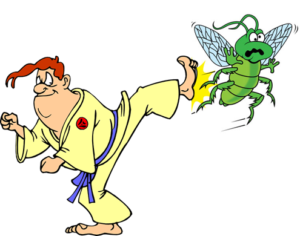
1. Cagging Plants
Caging plants is a great way to keep insects completely away from your plants. You don’t have to buy fancy, expensive insect netting. You can cheaply make your own.
What you need:
• Sheer curtains (You can get cheap ones at the dollar store.)
• PBC pipe or anything to support the curtains.
• Clamps or clothes pins.
• Rocks or other weighty things to hold down the curtains.
To completely cover my zucchini plants, the curtains weren’t the right dimensions. So I sowed them together. If you don’t have a sewing machine, no worries! Just tightly roll the sides together and secure with clothes pins. (The curtains usually last me 2-3 years before I have to replace them.)
In the past I’ve used fence posts to make a frame. This year I’m using PBC pipe as it should last me many years and I can reuse them to make cold frames. Use a saw to cut the pipe to make hoops. Then put them in the garden beds.
Use clamps or clothes pins to secure the curtains over the PBC pipe. Lastly, secure the curtains to the ground by placing rocks around the base to keep them from flying up in the wind and the pests out. Caging is a great way to keep squash borers and squash bugs from getting to your plants. They will be able to ‘smell’ the squash. Provided there are no holes or gaps in the netting, they won’t be able to get to the plants.
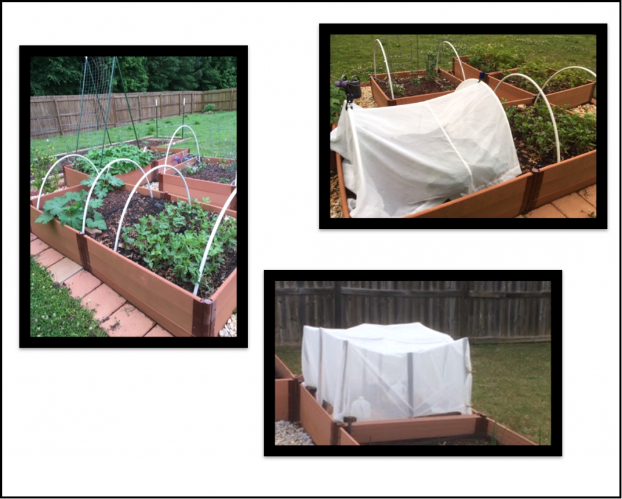
Cage the plants when you transplant them. One year I got busy and didn’t cage the plants until they were more mature. They still weren’t flowering, so I didn’t think anything of the time delay. I ended up caging squash bugs in with the zucchini giving them their own personal ‘Garden of Eden’. As you can imagine, this wasn’t good. It took a couple of weeks to get them all removed and for the plants to recover from the damage.
The squashes will stay in their cage until the plants get so large they start to burst out. Then I remove the sheer curtain and I rely heavily on the next 4 methods of pest prevention.
One thing to be aware of when cagging:
Zucchini are insect dependent for pollination. If you cage the plant, you are keeping not just the pests but the pollinators from getting to the flowers. Therefore, you must hand pollinate the zucchini. This is easy to do.
Zucchini have male and female flowers. The flowers bloom in the morning. Cut off a male flower, trim off the petals. Apply the male pollen to female flowers.
If there are no female flowers yet, cut off the male flowers, place them in a bag and store in the refrigerator. This way you have male flowers whenever a female flower blooms. They should keep for about a week.
Female flowers have a baby squash at the end of the flower while, male flowers have only a thin stem.
An Added Benefit to caging zucchini and hand pollinating comes into play when saving seeds.
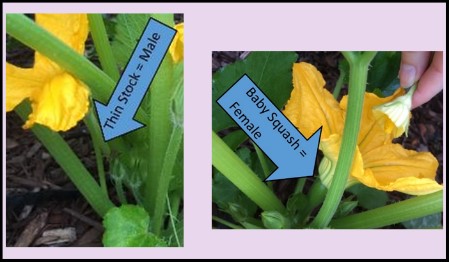
2. Diatomaceous Earth…What is it?
Diatomaceous earth is a type of powder made from the sediment of fossilized algae found in bodies of water. It is thought to kill insects by dehydrating them.
Slugs and snails do not like to crawl over DE because the silica skeletons are very sharp—like tiny pieces of broken glass. If their soft bodies do get cut, they eventually dehydrate and die. This process works on both soft-bodied and hard-bodied insects.
The downside to DE is that it does not discriminate between pests and beneficial insects. Ladybugs, green lacewings, butterflies, bees, and other “good guys” will also be affected by DE. So, when applying, do your best not to get it on the flowers.
I only use it as a ring barrier at the base of the squash stem. I also place some on the stem. This limits how much contact beneficial insects come in contact with it. And since the Squash Vine Borer likes to lay its eggs on the stem or at the base of the stem, the adult will get coated with DE and any eggs that hatch will get cut and die. You do have to stay on top of the application of it as dew will eventually render it ineffective and rain will wash it away. Once the cage comes off, DE used this way is very helpful.
Diatomaceous earth SAFETY
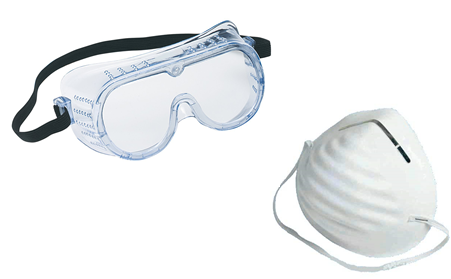
When using diatomaceous earth you want to make sure it is food grade. Food grade is the most effective when combating insects.
It’s recommended to use safety goggles and a dust mask, as the small particles can be irritating.
You want safety goggles that make full contact with your face like these, so no particles can get into your eyes.
These particles are very sharp, like broken glass. Just like you wouldn’t want broken glass in your eyes or lungs, you don’t want diatomaceous earth in your eyes and lungs. It can cut them.
Diatomaceous earth (food grade) is not toxic if eaten and it will not harm the soil or wildlife. It doesn’t break down in the sun, but rain will wash it off. You will have to reapply after a rain shower.
How to apply diatomaceous earth.

You can create a ring barrier around plants to keep slugs and snails away. If your leaves or squash are being chomped on, you can use a duster to spray it on the leaves. You can also try coating the fruit with DE or sprinkling it on the soil if you notice pickle worm damage.
It’s best to spray diatomaceous earth on the leaves in the morning, while there is still due on the plants, for it to stick to, and before the wind picks up. Otherwise, spray the plants with water, then spray with DE, so it sticks. Please remember your safety equipment.
Try to avoid spraying flowers, as diatomaceous earth affects both beneficial insects and pest insects.
3. Crop Rotation

I’ve also found rotating my zucchini around to be very helpful. Each year the zucchini is in a different garden bed. This way if there are any insect eggs left in the soil from the previous year, when they hatch they won’t find the zucchini there to destroy and they will starve.
Tip: Squashes are heavy feeders. Plant them in the area where legumes were planted the previous year. Legumes like peas, beans, and cowpeas fix nitrogen in the soil making it accessible for the roots of plants to take it up.
4. Companion Planting
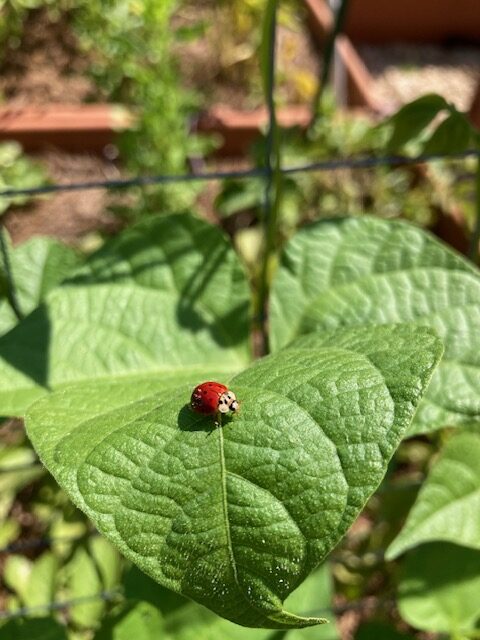
Companion planting is another method that really works! This is when you are planting various plants that attract beneficial predators that will eat the pests. Using this method will help control the pest population by getting nature to take care of things for you versus using chemicals.
I’ve had huge success with planting radishes with my squashes. Garden lore states that radishes will repel squash bugs. They produce a chemical that squash bugs greatly dislike. My experience backs this up! When using radish this way they are not for eating. You are letting the radish bolt–flower and go to seed. You also want the radishes close enough to the squashes so that they are touching. This will allow the chemicals the radish produces (that squash bugs dislike) to be transferred to the squashes. This will make the squashes ‘smell bad’ to the squash bugs.
I also plant various other companion plants with my zucchini to attract various beneficial predators. Daisies, alyssum, zinnias, and caraway are the main companion plants I use every year for my squashes. They attract many kinds of predators that will eat all kinds of pests no matter what stage they are in. (Egg, larva, pupa, or adult).
For more on how to make companion planting effective, check out my video.
5. Trap Cropping
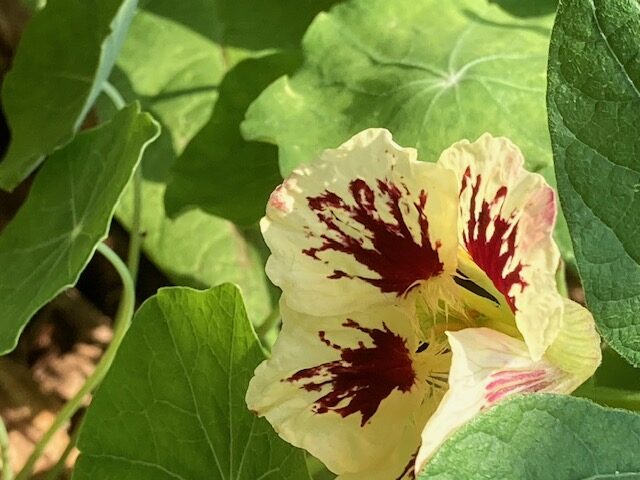
This is very useful especially if you are growing more zucchini than is feasible to cage. Trap cropping is using a more appetizing plant to lure away pests from the main crop. Think of it this way. If you had a choice between a vegetable you just like and a dessert you REALLY love, the trap crop is the dessert the pests REALLY love.
There are several crops you can use to lure pests away from zucchini. To use them there are 3 main techniques and 3 main planting methods to choose from. If you struggle with aphids and squash vine borers, trap cropping will help you. To learn more about trap cropping, how it works, and what trap crops to use, check out “How to trap crop“.
While the companion plants helped greatly with many pests, I still struggle with squash vine borers. Nasturtium is preferred by the vine borers. This is a great one to use as a trap crop. For my setup, the best method for me to use is mixed.
Since these flowers also attract pollinators, I don’t want to spray them with DE or chemicals. Once I notice the plants looking distressed, I remove them. Since I’m removing the plants, I have to use succession planting with these flowers. That way I always have some flowers blooming (to keep attracting the vine borer) and a constant supply of the flowers. It is a lot to keep up with, but it does work!
By using one or all of these methods, you will greatly reduce pests and maximize zucchini goodness.
You May Also Like: